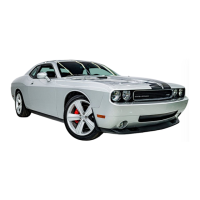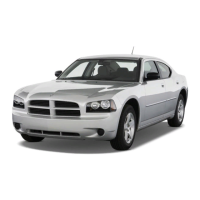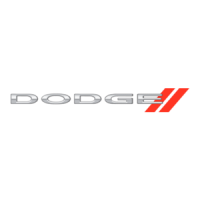
Do you have a question about the Dodge 2009 Challenger and is the answer not in the manual?
| Brand | Dodge |
|---|---|
| Model | 2009 Challenger |
| Category | Automobile |
| Language | English |
Guides users on navigating and utilizing the manual's content effectively.
Details the VIN, its location, and importance for vehicle identification.
Warns about the impact of vehicle modifications on safety and roadworthiness.
Explains the vehicle's keyless ignition system, fob, and emergency key.
Describes the Sentry Key Immobilizer System and its anti-theft function.
Details the functions and operation of the vehicle's security alarm system.
Explains how to use the Remote Keyless Entry system for locking/unlocking and other features.
Covers the proper use of seat belts and restraint systems for occupant safety.
Provides essential information on selecting and installing child restraint systems safely.
Explains the operation and adjustment of various vehicle mirrors, including auto-dimming.
Details the features and operation of the uconnect phone system for hands-free communication.
Covers seat adjustments, including power seats, manual recline, and head restraints.
Explains the operation of various exterior and interior lighting systems, including headlights and fog lights.
Explains how to use and manage the Electronic Speed Control (cruise control) system.
Explains the operation of the vehicle's heating, ventilation, and air conditioning (HVAC) system.
Details the various gauges and indicators within the instrument cluster for vehicle monitoring.
Explains the driver-interactive display system for accessing vehicle information and settings.
Covers the operation and features of the audio system with CD and MP3 playback capabilities.
Guides the user through the essential steps for safely starting the vehicle under various conditions.
Details the operation and gear selection for the automatic transmission.
Provides critical safety advice for driving in adverse conditions to maintain traction and control.
Explains the dual hydraulic brake system, ABS, and EBD for optimal braking performance.
Covers important information regarding tire markings, loading, pressure, and safety.
Specifies the types of fuel and octane ratings recommended for optimal engine performance and longevity.
Provides immediate steps to take if the vehicle's engine overheats to prevent damage.
Details the safe procedures for changing a flat tire, including jack usage and precautions.
Provides step-by-step instructions for safely jump-starting a vehicle with a dead battery.
Explains the correct procedures and precautions for towing a disabled vehicle.
Covers checking and maintaining the engine oil level and viscosity for optimal lubrication.
Details recommended service for the air conditioning system for optimal performance.
Provides recommendations for protecting the vehicle's body and paint from corrosion.
Lists fuse locations and specifications within the Integrated Power Module (IPM).
Offers guidance on proper procedures for storing the vehicle to protect the battery.
Provides a guide to identifying and replacing various interior and exterior light bulbs.
Outlines scheduled maintenance for emission control systems to ensure proper function.
Provides a comprehensive schedule of required maintenance services based on mileage and time.
Offers advice and tips for effectively obtaining service for the vehicle.
Details the terms and provisions of the manufacturer's warranties applicable to U.S. vehicles.
Explains the process for reporting potential safety defects to NHTSA and the manufacturer.
Defines the DOT tire grading categories for Treadwear, Traction, and Temperature.











